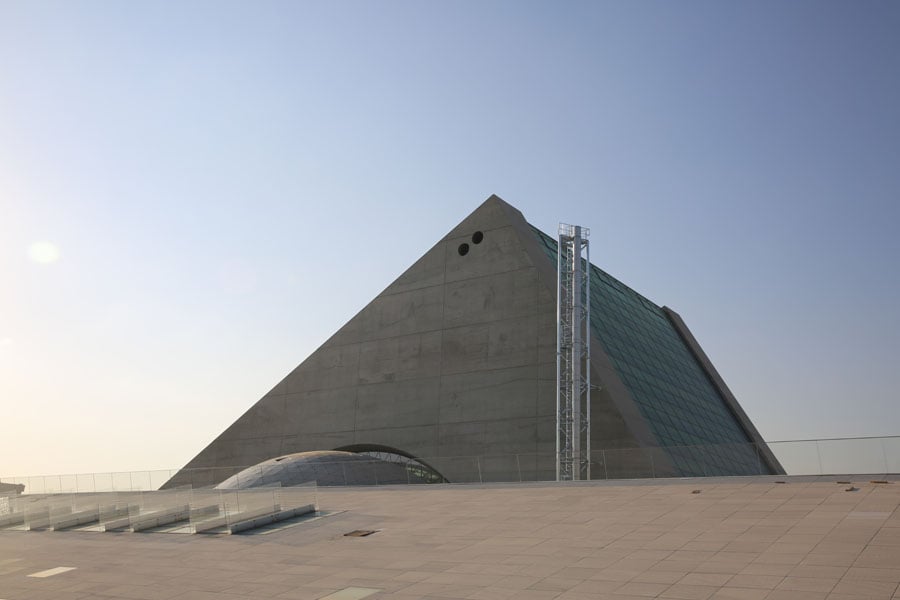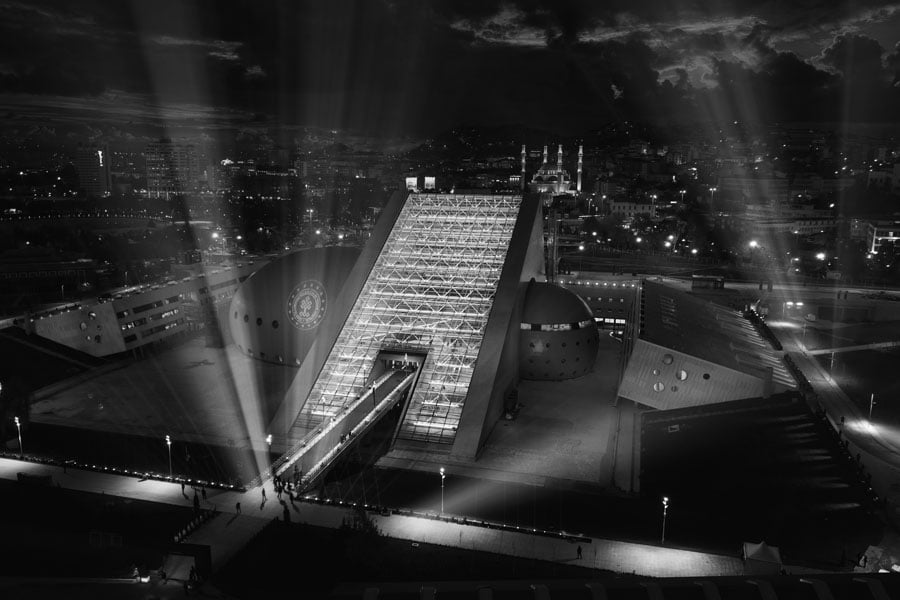
January 29, 2021
After Three Decades, Turkey’s Presidential Symphony Orchestra Concert Hall Finally Opens
The complex has recently been completed after Ankara-based architecture firm Uygur Mimarlık was selected to design the government-funded project in 1992.
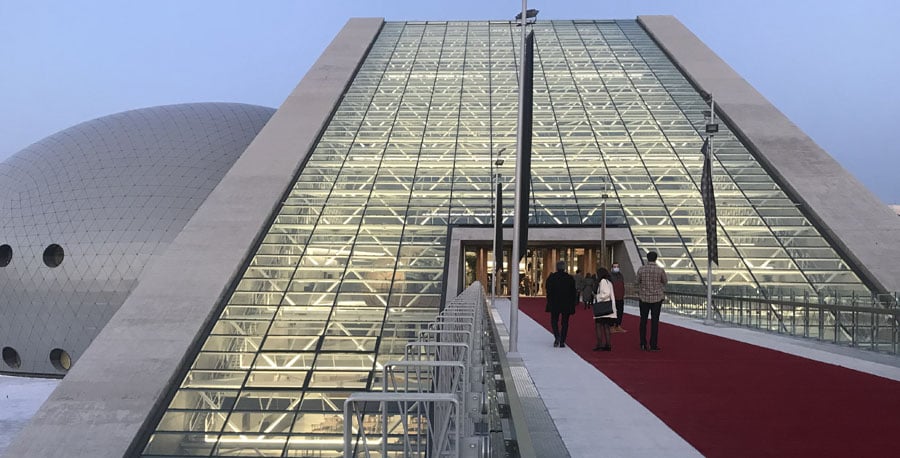
If anything defines Ankara’s Presidential Symphony Orchestra, it is its arduous construction timeline. The building of the Turkish capital’s concert hall has spanned over three decades and has been through five presidents, ten prime ministers, and twenty ministers of culture. It was back in 1992 when the local architecture firm Uygur Mimarlık won the national open call to design the nation’s only presidential music hall. “I still remember hand-cutting pieces for the model and drawing the sketches with a pair of compasses,” the firm’s cofounder Semra Uygur tells Metropolis. She founded the firm with her husband Özcan a few years prior to winning the national competition out of forty-five submitted proposals.
Since then, tumult has overshadowed the country’s cultural prospects. A recession in the late 1990s was followed by the Justice and Development Party (AKP)’s assumption of power in 2002, led by the party’s founder Recep Tayyip Erdoğan, who has since amassed bureaucratic control and influence. Attempts to join the European Union shelved, the social landscape since has been inhabited by limitations on free speech, the nationwide Gezi Park protests in 2013, and 2016’s brutal failed coup attempt.
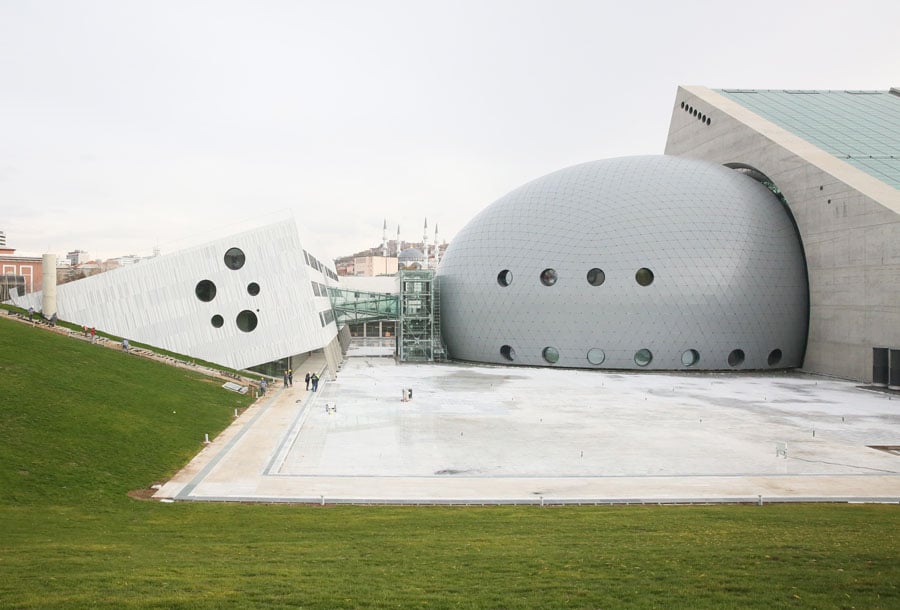
After breaking ground across 14-acres of land in 1997, the music hall’s construction encountered multiple halts along the way due to budget cuts and changing priorities between different governments. A kickstart three years ago has finally yielded the completion of what now is a 673,250-square-foot complex, which reflects its resilience through a provenly forward-looking design.
Composed of both curvilinear and sharp-edged buildings, the complex is sunken 42.5-feet below street level creating a crater-like imprint that lends an otherworldly impact. According to the architects, the decision was to avoid interrupting the views of Ankara’s symbolic Anıtkabir mausoleum dedicated to modern Turkey’s founder and first president, Mustafa Kemal Atatürk. “We are thrilled to be located within proximity to the memorial and the Ankara Castle, and our design strategy prioritizes vistas of both monuments,” says Semra Uygur.
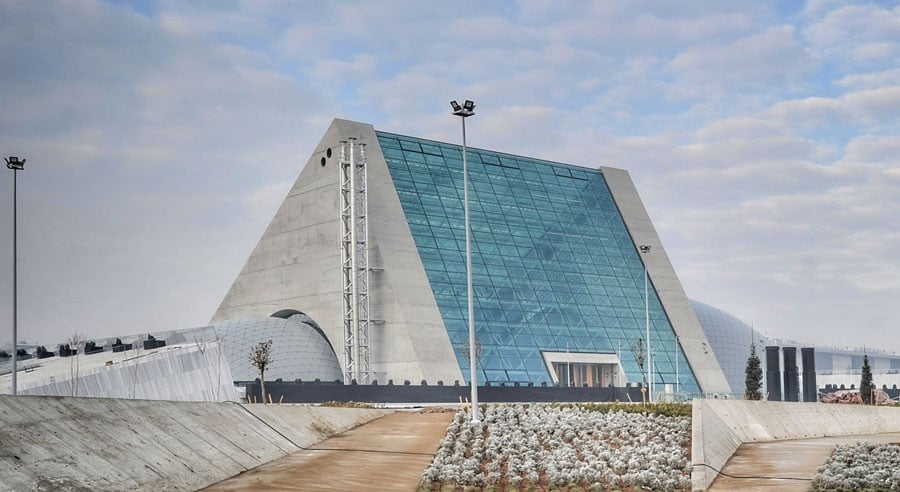
A pyramid-shaped glass and marble foyer connects two spherical concert venues built with a pneumatic formwork. A larger egg-shaped 22,689-square-foot frosted glass auditorium accommodates up to 2,000 guests, while a smaller 8,000-square-foot hall holds 500 seats. Two upward-tilted staff buildings complete the galaxy of forms. The duo summarizes their approach as “simple Euclidian geometries coming together to balance interior and exterior dynamics.”
Guest’s experience is a clear incentive in the architects’ vision which eschews a singular roof or facade to convey a sculptural structure composed of seemingly independent forms. “We aimed for a different panorama from every angle,” notes Özcan Uygur.
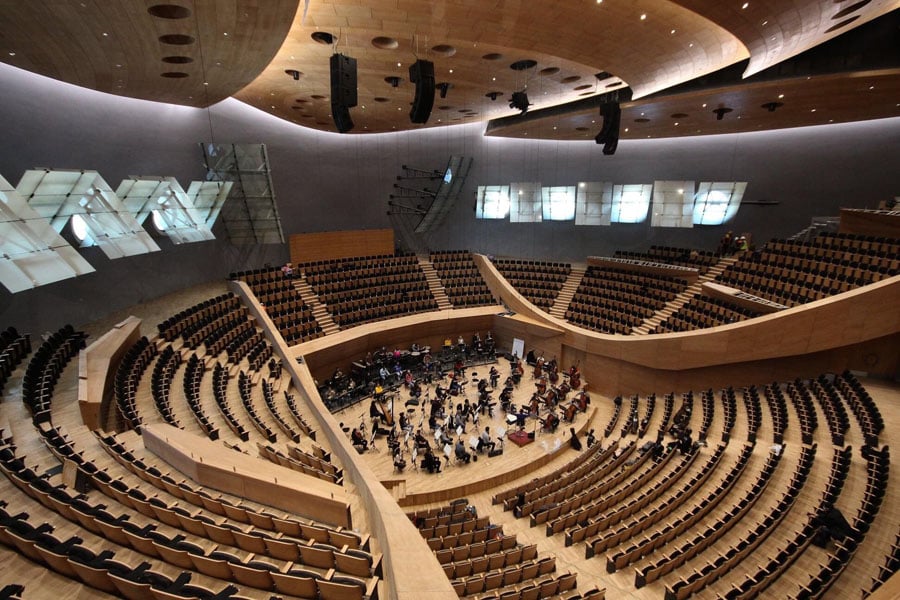
Today, the firm’s design is an unintentional statement on a futuristic aesthetic which, in this case, looks back at the time of conceptualization from the very future they were intending to convey. In addition to emphasizing the myth of a one-step-ahead future—think flying cars and robot maids—the project stands as a visual representation of evolving technologies in architecture and design. “We had realized we were due for an upgrade to computers while preparing for this proposal,” the architects remember, and today, the complex was finished using the latest building tech, from 3D-modeling and rendering to CNC-machining. They note, “We improved the project numerous times to bring it to the times’ standards.” In fact, timelessness was expressed as the primary motivation for the jury’s decision to pick Uygurs’ proposal to begin with. Decades later, the impression seems to endure.
After a soft opening last December considering COVID-19 regulations, the Presidential Symphony Orchestra Concert Hall is on-hold for a grand unveiling when audiences are safely able to fill the two wood-clad auditoriums.
You may also enjoy “Has the Pandemic Changed the Experience of Encountering Art in Public?”
Would you like to comment on this article? Send your thoughts to: [email protected]
Register here for Metropolis’s Think Tank Thursdays and hear what leading firms across North America are thinking and working on today.




